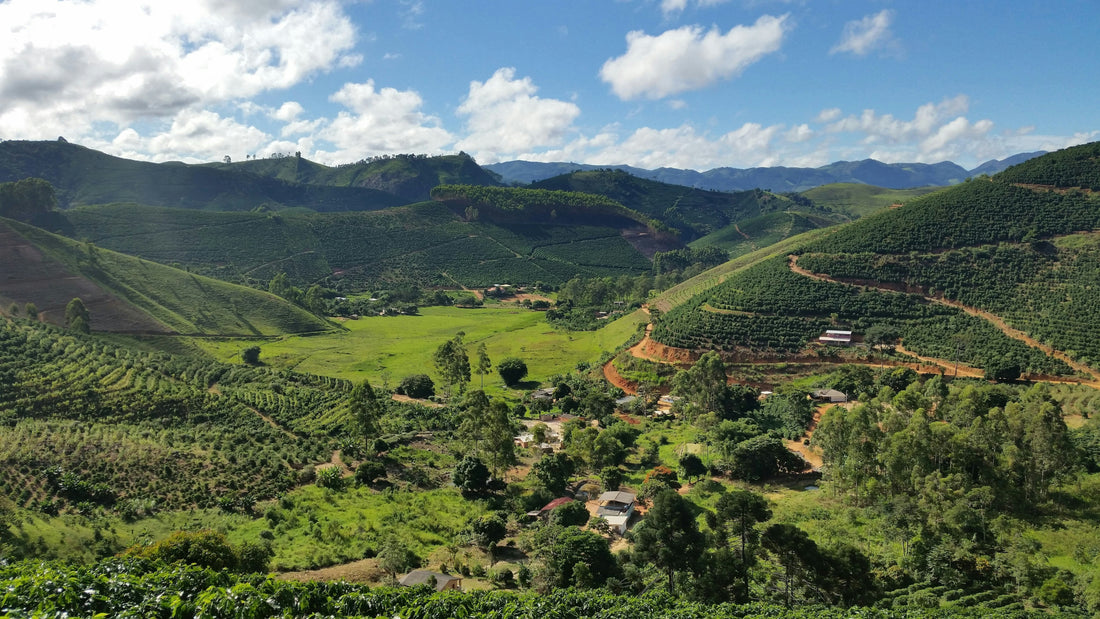From the farm to your mug, there are five major components to creating the coffee you enjoy: Process, Environment, Variety, Roasting, and Brewing. Join us as we uncover each of these elements so are able to appreciate the intricacies of a great cup of coffee.
For this segment we're focusing on the environment in which coffee is grown—its elevation, climate, and terroir—plays a crucial role in shaping its flavor. From the bright, fruity notes of high-altitude Ethiopian beans to the rich, nutty profiles of Brazilian coffee, every factor of a coffee's environment brings something unique to the cup.
Elevation
Elevation is one of the most significant influences on coffee flavor. Generally, coffee grown at higher altitudes (above 1,200 meters or 4,000 feet) experiences cooler temperatures, which slows the growth of the coffee cherry. This extended development period allows the beans to become denser and more complex in flavor. High-elevation coffees tend to have bright acidity, floral or fruity notes, and a crisp finish. On the other hand, lower-altitude coffee (below 1,200 meters) often produces beans with a milder profile, leaning toward nutty, chocolatey, or earthy characteristics.
Terroir
Just like wine, coffee is deeply influenced by terroir—the unique combination of geography, climate, and environmental conditions of a region. Every coffee-growing area has its own distinct terroir, which imparts flavors that make coffees from Ethiopia taste wildly different from those from Colombia or Sumatra. The interplay between temperature, humidity, altitude, and surrounding vegetation contributes to the nuances in the cup.
Climate
Coffee thrives in tropical climates with distinct wet and dry seasons. The amount of rainfall, temperature fluctuations, and seasonal changes all contribute to a coffee’s final taste profile. Regions with steady rainfall and moderate temperatures encourage slow cherry maturation, resulting in refined acidity and complex flavors. In contrast, unpredictable weather patterns, excessive heat, or frost can negatively impact yield and quality.
Coffee Regions
Each coffee-growing region brings something special to the table. Here’s a glimpse into how environment influences the cup from some of the our recent origins:
-
Ethiopia: Known as the birthplace of coffee, Ethiopia’s high-altitude farms, diverse microclimates, and heirloom varieties create vibrant coffees with floral and fruity notes.
-
Colombia: With its mountainous terrain and well-balanced climate, Colombian coffee often features bright acidity, caramel sweetness, and a smooth body.
-
Brazil: The world's largest coffee producer, Brazil’s lower-altitude farms and rich soil yield coffees with full-bodied, chocolate, nutty, and creamy profiles.
-
Guatemala: Volcanic soil, high elevations, and microclimates contribute to Guatemalan coffees’ bold flavors, often with cocoa, spice, and citrus undertones.
From Origin to Your Cup
The environment in which coffee is grown is a key player in the flavors you experience in every sip. At Joylight Coffee, we carefully source beans from regions where nature’s conditions create extraordinary coffee. From high-elevation Ethiopian coffees bursting with florals to Brazilian beans offering deep chocolatey warmth, we celebrate the journey from crop to cup—one sip at a time.
Taste for yourself the impact that elevation, terroir, and regions have on your cup by getting a bag of coffee.
We'd love to hear from you in the comments something you found interesting or questions you might have!

